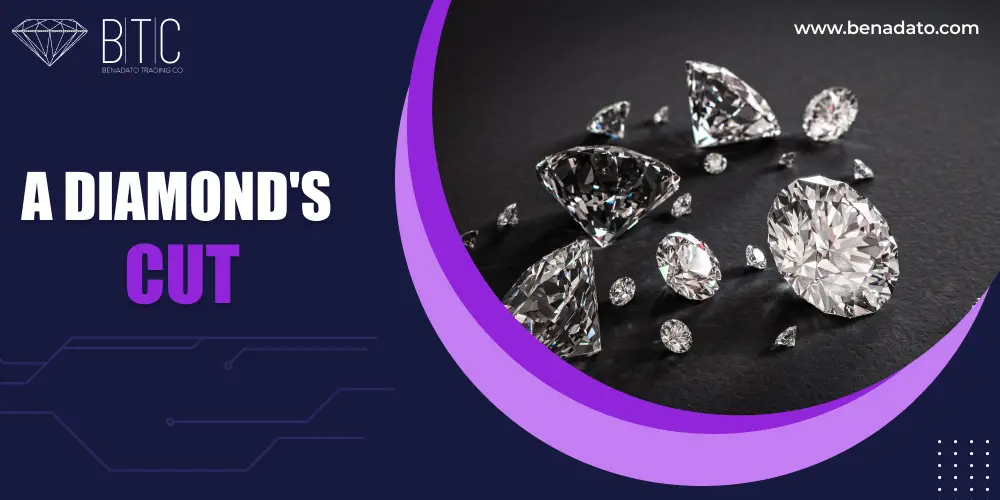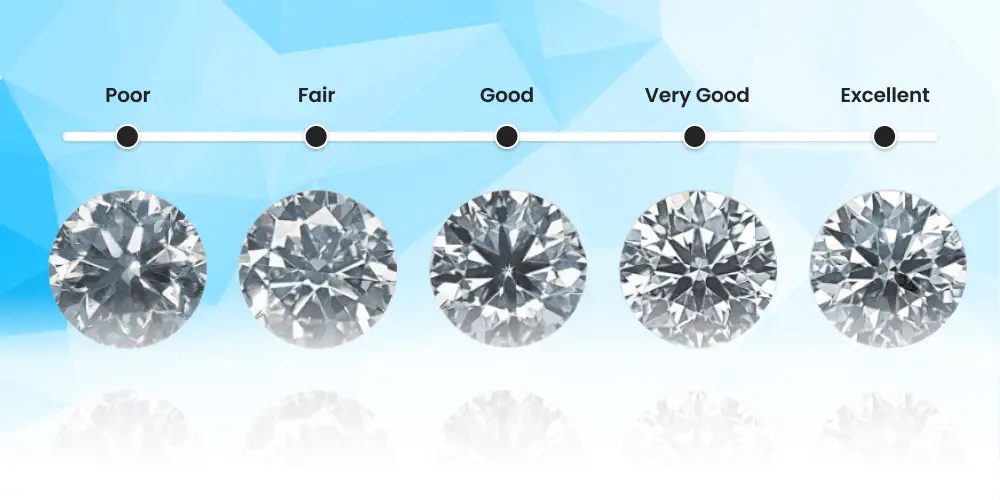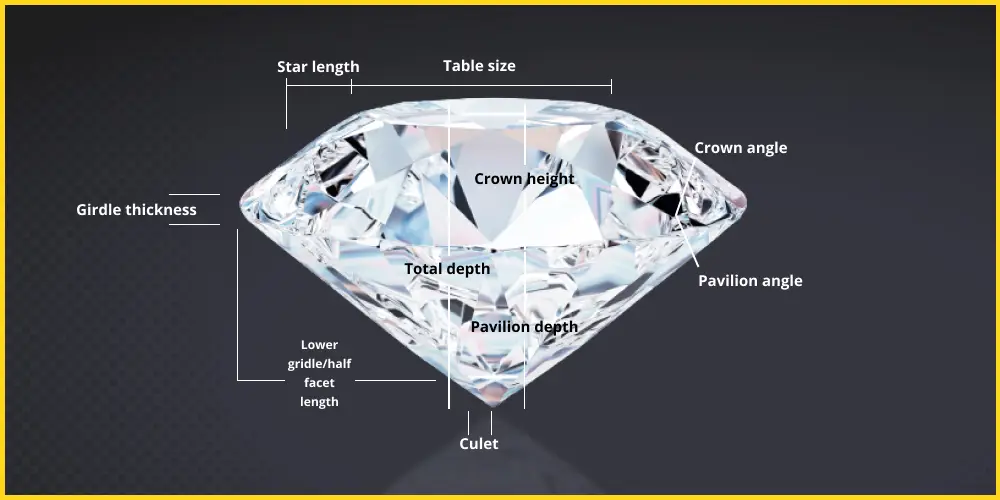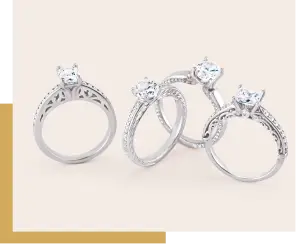
The cut is considered by many to be the most important C. A poorly cut diamond, no matter how great its color and clarity is, will not compare in sparkle and fire to a better cut diamond with comparatively lower color and clarity grade There will always be different opinions on the best diameter of the largest facet on the top of the stone and the best depth for a diamond because these factors alone are not sufficient to accurately judge a diamond’s cut. Other diamond factors such as crown angle, girdle thickness, pavilion depth-percentage, cutlet size, polish, and symmetry also play a vital role in judging a diamond’s overall cut quality.

Each lab uses its terminology, which can sometimes be confusing.
For example, GIA calls its top grading Excellent followed by Very Good, while other labs use the terminology Very Good as their top grade. A diamond graded Very Good by GSL, for example, would, therefore, be the equivalent of a diamond graded Excellent by GIA.
While grades are not the same, it is typically recommended to buy a diamond with a Good grade or better regardless of who has provided a certificate. It’s not recommended to buy diamonds with grades of Medium, Fair, or Poor, as the alignment of their facets may misdirect light so severely that it affects the brilliance of the diamond.

Proportions are not the only thing that affects cut. Other factors have to do with the type of geometry and quality of the result.
In round diamonds, a thin to medium girdle is preferred (too thick will result in a smaller diameter for the respective weight; too thin has durability issues). This can vary with fancy shapes. For example shapes with sharp points are vulnerable to damage, so a thicker girdle ensures better durability. Side note: girdles can be faceted, polished, or bruted.
The culet of a diamond is the tiny point at the base of the pavilion. A culet is a pointed tip where the pavilion meets. It’s better to have no culet or a small one. Bigger cutlets can look like inclusions.
This refers to how consistent the diamond facets are. One misshapen facet can affect the facets surrounding it, setting off a chain reaction affecting angles, and reducing brilliance. Sometimes symmetry flaws are introduced on purpose to remove an inclusion and get a higher clarity grade. Poor symmetry affects the reflection of light. So it is better to stick with very good or excellent symmetry for round diamonds. Fancy shapes should be evaluated on a case-by-case basis, but the symmetry grade can be very good, and good must be evaluated.
Common symmetry flaws include:
Aside from a lower level of brilliance and light return, there are several telltale signs of a poorly cut diamond. Keep these in mind when shopping for a stone.
In longer fancy cut shapes like oval, marquise, or pear, there will often be black patches resembling a bowtie across the width of the diamond’s body. This occurs when the facets do not reflect light properly, and if it is present, you will see these black patches no matter which way you turn or tilt the diamond. Bow Ties occur due to light obstruction while viewing the stone, not light leakage. The actual process of viewing a diamond creates this effect, when an observer looks at a stone, the light rays traveling to the stone are blocked by the viewer’s head, which creates dark shadows that reflect within the stone. The cutter can eliminate or lessen the intensity of bow ties, but it may not be economically feasible to do so (losing too much weight = less profit).
On the bright side, slight bow ties can give fancy shaped diamonds an appealing look that defines their overall character. The bowties that you want to avoid are the ones that blackout a large area. Bowties will almost always appear to some degree in fancy cuts like ovals, marquises, and pears, but the presence of a bowtie does not automatically render a stone worthless. If these stones were cut to eliminate any incidence of bow-ties, they’d generally be cut to dismal proportions and would have issues with brilliance. Just look for a stone where the bowtie blends in well.
Bowties are never mentioned in grading reports, and online diamond distributors can’t always provide you with visual assurance.
When diamonds are cut too shallow, the internal reflections of the girdle can be seen in the table fact, creating an image of a gray ring that is visually distracting. These stones suffer from a lack of brilliance, and the ring can sometimes resemble an I3 type inclusion. The severity of the fisheye can depend on factors such as:
Fisheye can occur in fancy shape diamonds as well! Shapes like ovals, pears, and hearts can exhibit this effect if they are cut with a bad combination of angles. The fish eye phenomenon is an indication of a very poor cut, which makes any diamond dull and lifeless.
If you have 3 GIA triple excellent diamonds, how can you tell which one has the best light performance? This is where tools like the ASET (Angular Spectrum Evaluation Tool) and IdealScope come in.
The ASET scope provides more information about light performance. For fancy cut diamonds especially, the ASET is the preferred tool for evaluating light performance. However, it does take more knowledge to decipher what the colors mean and how they relate to the diamond’s optics.
The simplicity of the IdealScope brings a certain degree of lucidity to the table. You do not need any gemological qualification to figure out which aspects of an idealscope image to pay attention to. Red is desirable and indicates light return, while diamonds with too many white areas indicate problems with light leakage.
Get in touch with us to sell any of your diamond pieces for the best value.
